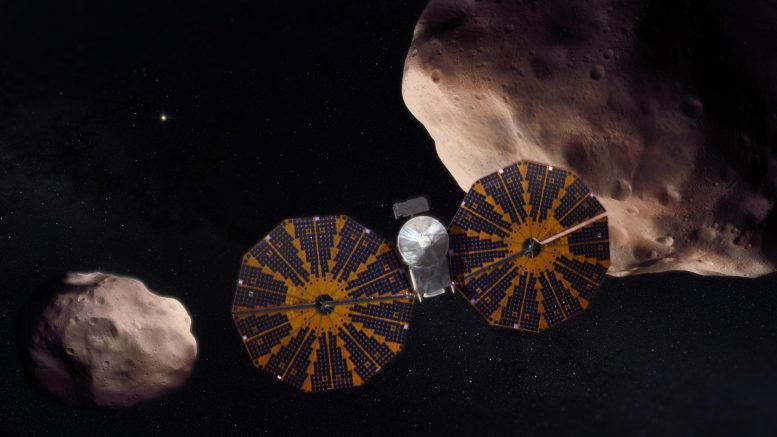
Lucy will explore the Jupiter Trojan asteroids – thought to be “fossils of planet formation.” Credit: NASA’s Goddard Space Flight Center
NASA’s Lucy spacecraft will launch in October 2021 on a 12-year journey to Jupiter’s Trojan asteroids. The Lucy mission will include three Earth gravity assists and visits to eight asteroids.
Called “Trojans” after characters from Greek mythology, most of Lucy’s target asteroids are left over from the formation of the solar system. These Trojans circle the Sun in two swarms: one that precedes and one that follows Jupiter in its orbit of the Sun. Lucy will be the first spacecraft to visit the Trojans, and the first to examine so many independent solar system targets, each in its own orbit of the Sun.
How did Lucy get its name?
Lucy gets its name from the fossilized human ancestor, called “Lucy” by her discoverers, whose skeleton provided unique insight into human evolution. Likewise, the Lucy mission will revolutionize our knowledge of planetary origins and the formation of the solar system.
Studying Jupiter’s Trojan asteroids up close would help scientists hone their theories on how our solar system’s planets formed 4.5 billion years ago and why they ended up in their current configuration. “It’s almost like we’re traveling back in time,” said aerospace engineer Jacob Englander, who helped design Lucy’s trajectory while working at NASA’s Goddard Space Flight Center in Greenbelt, Maryland.
First conceived seven years ago as a mission to two asteroids, Lucy expanded to epic proportions thanks to creative engineering and impeccable timing. Some imagine that karma may have had something to do with it as well: “I often joke that I’ve spent my career worshipping at the feet of the gods of celestial mechanics,” said Lucy principal investigator Harold Levison, an expert in planetary dynamics based out of the Boulder, Colorado, branch of Southwest Research Institute (SwRI), which is headquartered in San Antonio. “Now they’re paying us back for that devotion.”
“I often joke that I’ve spent my career worshipping at the feet of the gods of celestial mechanics. Now they’re paying us back for that devotion.”
— Harold Levison, Southwest Research Institute
This top-down, solar system view shows the entire Lucy mission in a Jupiter-rotating reference frame. In this reference frame, Jupiter appears fixed in space. Two large regions of asteroids are depicted along Jupiter’s orbit (know as the Jupiter Trojan Asteroids). Labels appear as each fly-by occurs. Credit: NASA’s Scientific Visualization Studio
The Trajectory
According to mission legend, the moment that changed everything was in 2014, a few years before NASA selected Lucy for flight. Longtime mission trajectory designer Brian Sutter from Lockheed Martin Space in Littleton, Colorado, was walking Levison through a computer simulation of Lucy’s proposed route through the solar system.
Patroclus and Menoetius: A Pair for the Ages
Located in the swarm of Trojan asteroids that trails Jupiter in its orbit, the binary pair Patroclus and Menoetius, about equal in mass, are spinning around the center of mass between them – “like a dumbbell with no bar,” Sutter noted. There’s good evidence that the first sizable things to form in the solar system were these types of binaries.
It appeared to Levison that Lucy would be passing Patroclus on its way to its official targets; Patroclus is one of a pair of Trojan asteroids that orbit each other. Unbeknownst to Sutter at the time, Patroclus is a favorite Trojan of Levison’s. Locked in a binary orbit with its near-twin partner Menoetius, it is a rare and mysterious breed inside the orbit of Neptune. Most asteroids that settled in the inner solar system should have been torn from their partners during the turbulent planet-formation period that was marked by massive collisions.
How did this pair stay intact? The answer could hold important clues to the timing and execution of planet formation, Levison said. “I don’t know why Brian chose to include Patroclus; maybe it was one of the big ones, maybe he liked the name,” he said. “But when I saw it, I remember shouting ‘Wait, wait: Can we go there?’”
Sutter has designed spacecraft trajectories for decades, including ones for NASA’s asteroid sample return mission OSIRIS-REx and NASA’s Mars Odyssey Orbiter, with spacecraft built by Lockheed Martin. He included Patroclus and Menoetius in Lucy’s trajectory simulation simply because they were in the celestial neighborhood; the pair wasn’t quite along Lucy’s path. But Sutter checked whether the solar system would be aligned in the future such that Lucy’s trajectory could bring it close enough to the pair to observe them.
Mission Trajectory Designer: Brian Sutter. How did you come up with Lucy’s complex trajectory?
As it happened, Lucy and the Patroclus-Menoetius pair crossed paths in 2033. “It was just luck,” Levison said.
This finding inspired Sutter to seek other targets along Lucy’s path during the mission timeframe. He fed 750,000 known asteroid orbits into a spreadsheet, plus Lucy’s trajectory at the time, and spent months running calculations that found a handful of additional asteroids — ones with diverse chemical compositions that were perfect science targets for the mission.
“I kept adding encounters in my simulation until we ran out of fuel on the spacecraft, and that’s where we ended Lucy’s trajectory,” Sutter said. “However, I also knew that there are more targets along the way, and we could get to them if we had a little more fuel.”
As he has always done, Sutter used Excel as one of his trajectory tools — a program most people associate with accounting — to design Lucy’s path through space. “I can do all kinds of magical things in it,” Sutter said. It would take Englander, who was working at NASA Goddard, to optimize the trajectory and get the spacecraft to eight targets ranging in diameter from about 2 miles (3 kilometers) to 70 miles (113 kilometers).
Mission Designer: Jacob Englander. What was your most memorable mission moment so far?
Now a mission designer at the Johns Hopkins Applied Physics Laboratory in Laurel, Maryland, Englander wasn’t involved with Lucy at the time that he read about it on a popular news site. He happened to be building a powerful software called Evolutionary Mission Trajectory Generator, or EMTG, now available as open-source software for anyone who wants to use it. EMTG could cycle through millions of trajectory scenarios in hours instead of months. “I had a feeling that it would be beneficial to Brian and the team if I were to give them a version of the trajectory rendered in EMTG, so I reverse engineered the mission based on the article,” Englander said.
The route Englander’s software identified reduced fuel use and the size of Lucy’s launch vehicle. As a result, it saved the mission money while taking it past more asteroids, securing Englander a position on the team, and setting Lucy up to get selected by NASA in 2017.
Lucy’s seven targets: the binary asteroid Patroclus/Menoetius, Eurybates, Orus, Leucus, Polymele, and the main belt asteroid DonaldJohanson. Credit: NASA’s Goddard Space Flight Center Conceptual Image Lab
Now, Lucy will launch from Earth aboard an Atlas V 401 rocket during a window that opens October 16, 2021. It will first fly by Earth twice to use this planet’s gravity to hurl itself toward the Trojans. In 2025, Lucy will fly past Donaldjohanson, which orbits in the asteroid belt between Mars and Jupiter. The team will use this flyby to test the spacecraft’s instruments.
By August 2027, Lucy will reach its first swarm of Trojans that precede Jupiter at a gravitationally stable location known as a Lagrange point, specifically known as L4. There, the spacecraft will first intersect with Eurybates (pronounced “yoo-RIB-a-teez” or “you-ri-BAY-teez”) and its satellite Queta (“KEH-tah”).
By September 2027, Lucy will fly by Polymele (“pah-li-MEH-lee” or “pah-LIM-ah-lee”), and then in April 2028 by Leucus (“LYOO-kus” or “LOO-kus”), and Orus (“O-rus”) in November 2028.
Lucy will then swing back past Earth for a third gravity assist, which will catapult it toward the swarm on the other side of Jupiter, located at the L5 Lagrange point, where it will meet up with Patroclus (“pa-TROH-klus”) and Menoetius (“meno-EE-shus” or “meh-NEE-shus”) in 2033.
The Science
The Trojans are clusters of rock grains and exotic ices that didn’t coalesce into planets when the solar system formed. They’re among the best-preserved evidence we have left from that period and are thus key to explaining how the solar system came to look the way it does.
Explore Lucy’s journey to one main-belt asteroid and seven Jupiter Trojans. Credit: NASA’s Goddard Space Flight Center
“When we look back on the solar system and our place here on Earth, people often ask, ‘What is our history? How did we get here?’” said Cathy Olkin, Lucy’s deputy principal investigator who’s based at Southwest Research Institute. “Lucy is going to try to help answer some of these questions.”
There are a handful of theories explaining how planets, moons, and other objects formed and ended up in their current locations. Levison, for instance, is a co-author of the Nice model, named after the city in France where it was developed in 2004. This computer simulation of the early solar system suggests that the giant, gaseous planets started out in a packed configuration around the Sun. Eventually, gravitational interactions with the disk of small bodies and with each other caused the growing planets to spread apart. Neptune, Uranus, and Saturn spread out farther away from the Sun, while Jupiter moved slightly closer in.
“In this theory, this reshuffling caused chaotic disruption,” said Olkin, a planetary scientist, “scattering many bodies out of the solar system and drawing some in and trapping them around the Lagrange points. That’s one possible explanation for how Jupiter’s Trojans came to be.”
Deputy Principal Investigator: Cathy Olkin. What’s going to keep you excited during the four years that Lucy will spend traveling to its first target?
Comparing the composition of the Jupiter Trojans will help scientists unravel their history. From Earth and space telescopes, Trojans look compositionally different from each other. Is that because each came from a different part of the solar system and was thus made of different stuff? Or are the Trojans made of the same stuff, with differences visible only on their surfaces, which may have been altered by different degrees of heating, radiation, and collisions the asteroids experienced while making their way to their current Lagrange positions.
Scientists will try to answer these and other questions with Lucy by using instruments such as L’Ralph, which is based on a similar one Olkin led on NASA’s New Horizons spacecraft. L’Ralph will probe the chemical makeup of the nooks and crannies of asteroid surfaces from about 620 miles, or 1,000 kilometers, away on average. Deep crater beds, or crater walls, may offer access to the interiors of these asteroids, which are made of younger materials (millions of years old vs. billions of years for the oldest exterior surface). Such “fresh” surfaces presumably would not have been exposed to as much radiation and micrometeorite impacts, and thus could preserve some of the asteroid’s original composition.
Using Lucy’s L’LORRI black-and-white camera scientists will count the number of craters on asteroid surfaces, which will offer clues to the environments that the asteroids were exposed to billions of years ago. Many large craters would indicate that the asteroid formed in the turbulent and warmer region closer to the Sun; while fewer craters would imply the Trojan formed in the relatively calm and cold outermost region of the budding solar system. Figuring out where these asteroids formed in the disk of gas and dust that spawned the solar system, plus other forms of evidence, will help scientists test their planetary formation theories.
“That would be the story that I would like to see unfold over the next decade or so,” Levison said.
A Long Mission
“It could well be that by the time Lucy is done, or out of gas, that my son who was just born will be the age that I am now.”
– Jacob Englander, NASA’s Goddard Space Flight Center
Though most NASA missions last several years, engineers build such durable spacecraft and instruments that they can operate well beyond their primary assignments, and, indeed, many do. The New Horizons mission to Pluto, for instance, was designed to last for 10.5 years, including a nine-and-a-half-year commute to the dwarf planet. But the mission was extended, and the spacecraft remains active to this day, 15 years after it launched in 2006.
Principal Investigator: Harold Levison. Are you making different life choices given the very long mission?
Lucy’s primary mission of 12 years is NASA’s longest yet. To sustain such an ambitious pursuit, the team had to plan not only for the longevity of the spacecraft — which was partly modeled on New Horizons — but also of its people. From conceiving the mission, to submitting proposals to NASA, to getting selected and building the spacecraft, some team members have already worked on Lucy for more than a decade – and the spacecraft hasn’t even launched yet! Some will spend much of their adult lives working on this mission. And if Lucy continues to an extended mission, it could fly for many decades.
“It could well be that by the time Lucy is done, or out of gas, that my son who was just born will be the age that I am now,” said Englander, who is 37 years old, “and that is just really cool!”
But people change jobs and retire, so given Lucy’s lifetime, the team wanted to avoid major disruptions during these inevitable changes. To do so, the team incorporated a succession plan into Lucy’s design: Mission leads who tend to be further along in their careers have younger deputies who can take over if necessary. “We had the eye on the longevity issue from the very beginning,” said Levison, who will be 75 by the time the primary mission ends in 2033.
Patroclus and Menoetius, continued….
Located in the swarm of Trojan asteroids that trails Jupiter in its orbit, the binary pair Patroclus and Menoetius, about equal in mass, are spinning around the center of mass between them – “like a dumbbell with no bar,” Sutter noted. There’s good evidence that the first sizable things to form in the solar system were these types of binaries.
Today, most such binaries are confined to the Kuiper Belt, a donut-shaped region of the oldest and least-altered comets and other objects made of ice, rock, and dust. This belt stretches from the orbit of outermost planet Neptune to beyond the orbit of Pluto.
Current evidence indicates that Patroclus and Menoetius likely formed in the outer solar system, in the same place as many of the Kuiper Belt objects — they hope to learn for certain when Lucy gets close to them in 2033. If so, this Trojan pair might be scientists’ best hope of reaching more Kuiper-belt-like objects (New Horizons visited Kuiper belt object Ahronoth in 2019).
Scientists like Levison theorize that when the giant planets started shifting their orbits around 4 to 4.5 billion years ago they scattered everything around them. Patroclus and Menoetius happened to be scattered inward toward Jupiter, while many other objects were caught in the Kuiper Belt, and some were launched out of the solar system. “So, we’re looking for clues whether that’s correct or not,” said Keith Noll, Lucy project scientist who’s based at NASA Goddard.
When Lucy reaches the Patroclus pair, scientists will examine their composition and the number of craters on their surfaces. “Will they be smooth or beat up?” said Noll. “And are they beat up a little or a lot?” Finding answers to these questions will give scientists insight into the relative age of the Trojan asteroids and conditions of the early solar system.

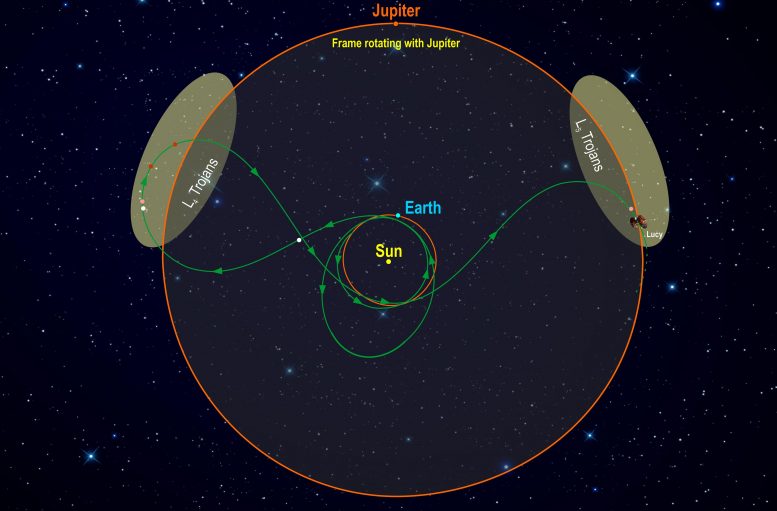
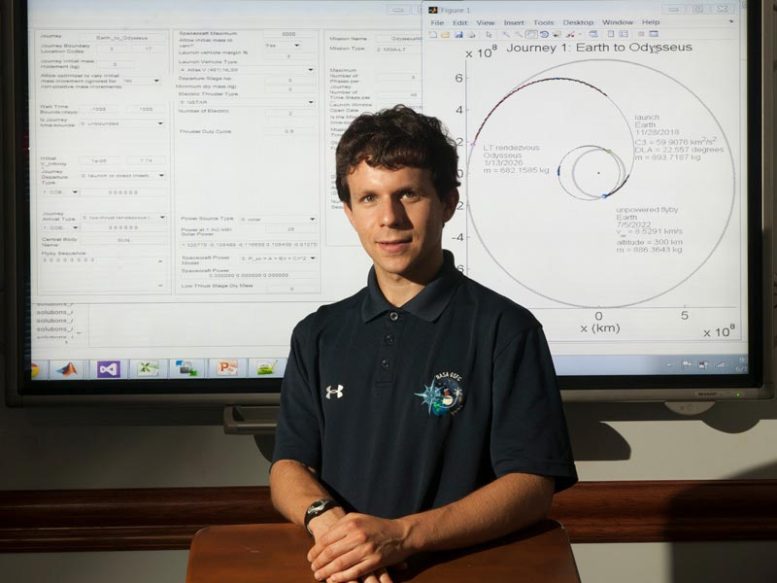
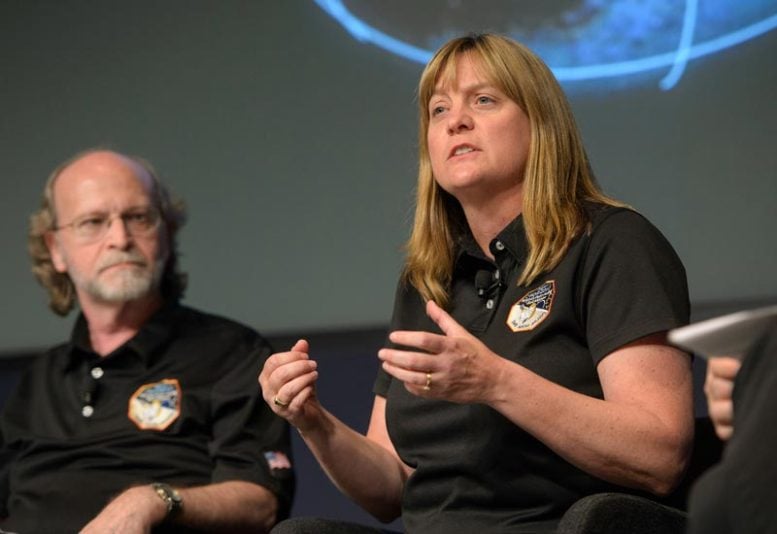
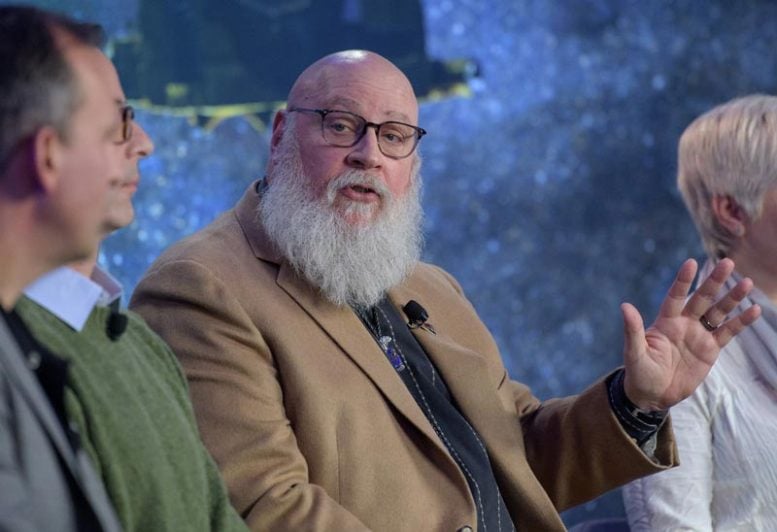
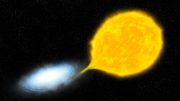
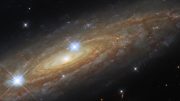
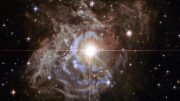
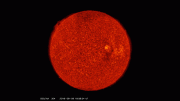


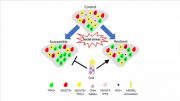
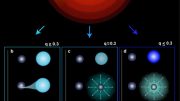
Be the first to comment on "NASA’s Lucy Mission To Explore the Jupiter Trojan Asteroids – “It’s Almost Like We’re Traveling Back in Time”"